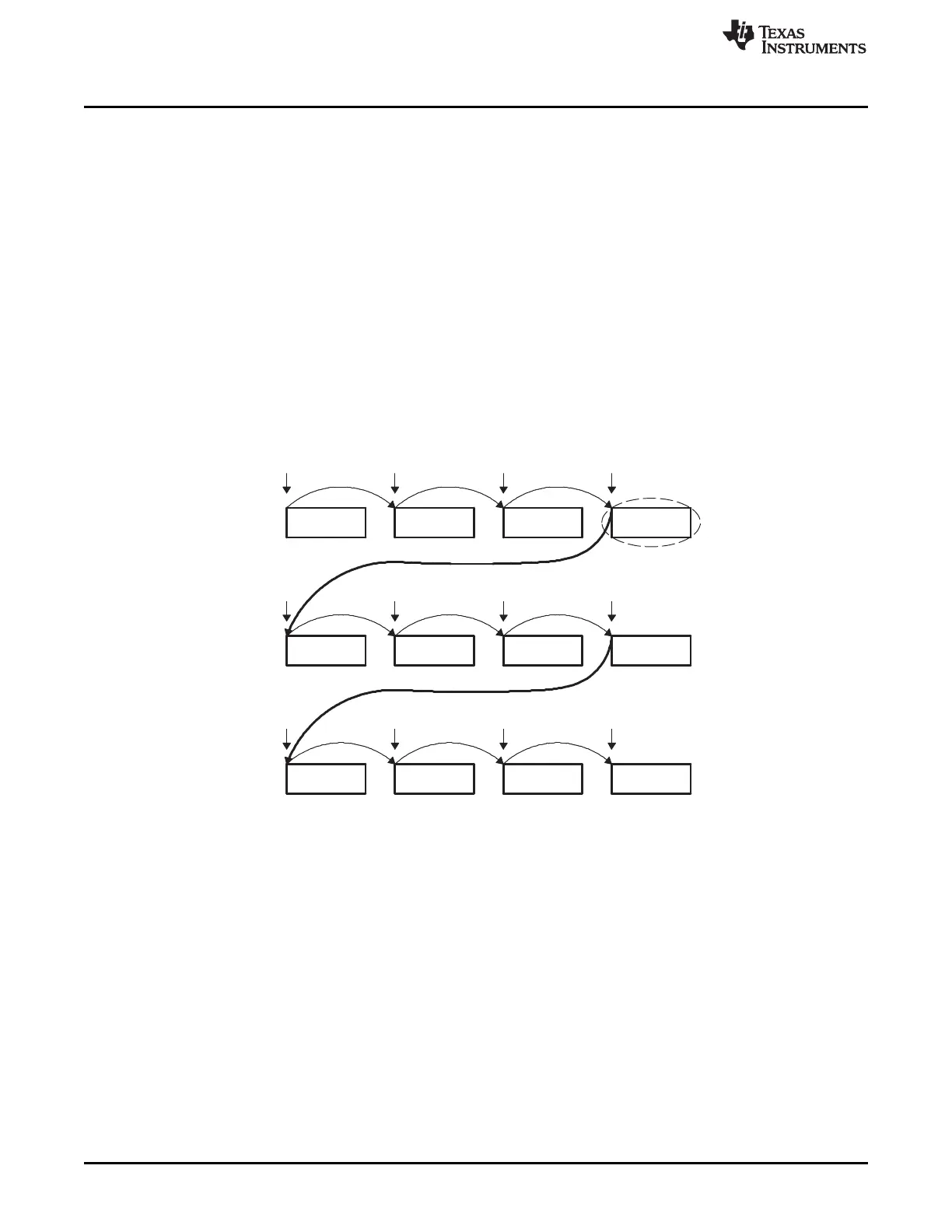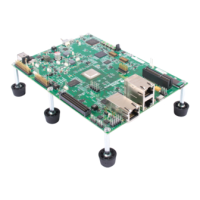Array0 Array1 Array2 Array3
Eacharraysubmit
asoneTR
Array0 Array3Array1 Array2
(SRC|DST)
BIDX
(SRC|DST)
BIDX
(SRC|DST)
BIDX
(SRC|DST)
BIDX
(SRC|DST)
BIDX
(SRC|DST)
BIDX
(SRC|DST)
CIDX
(SRC|DST)
BIDX
Array0 Array3
(SRC|DST)
Array1
BIDX BIDX
(SRC|DST)
Array2
(SRC|DST)
CIDX
Frame0
Frame1
Frame2
Functional Description
www.ti.com
11.3.2.1 A-Synchronized Transfers
In an A-synchronized transfer, each EDMA3 sync event initiates the transfer of the 1st dimension of ACNT
bytes, or one array of ACNT bytes. In other words, each event/TR packet conveys the transfer information
for one array only. Thus, BCNT × CCNT events are needed to completely service a PaRAM set.
Arrays are always separated by SRCBIDX and DSTBIDX, as shown in Figure 11-7, where the start
address of Array N is equal to the start address of Array N – 1 plus source (SRC) or destination (DST)
BIDX.
Frames are always separated by SRCCIDX and DSTCIDX. For A-synchronized transfers, after the frame
is exhausted, the address is updated by adding SRCCIDX/DSTCIDX to the beginning address of the last
array in the frame. As in Figure 11-7, SRCCIDX/DSTCIDX is the difference between the start of Frame 0
Array 3 to the start of Frame 1 Array 0.
Figure 11-7 shows an A-synchronized transfer of 3 (CCNT) frames of 4 (BCNT) arrays of n (ACNT) bytes.
In this example, a total of 12 sync events (BCNT × CCNT) exhaust a PaRAM set. See Section 11.3.3.6 for
details on parameter set updates.
Figure 11-7. A-Synchronized Transfers (ACNT = n, BCNT = 4, CCNT = 3)
880
Enhanced Direct Memory Access (EDMA) SPRUH73H–October 2011–Revised April 2013
Submit Documentation Feedback
Copyright © 2011–2013, Texas Instruments Incorporated

